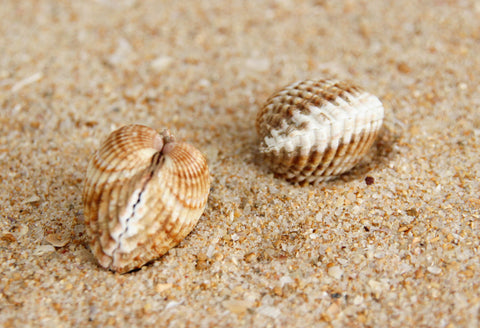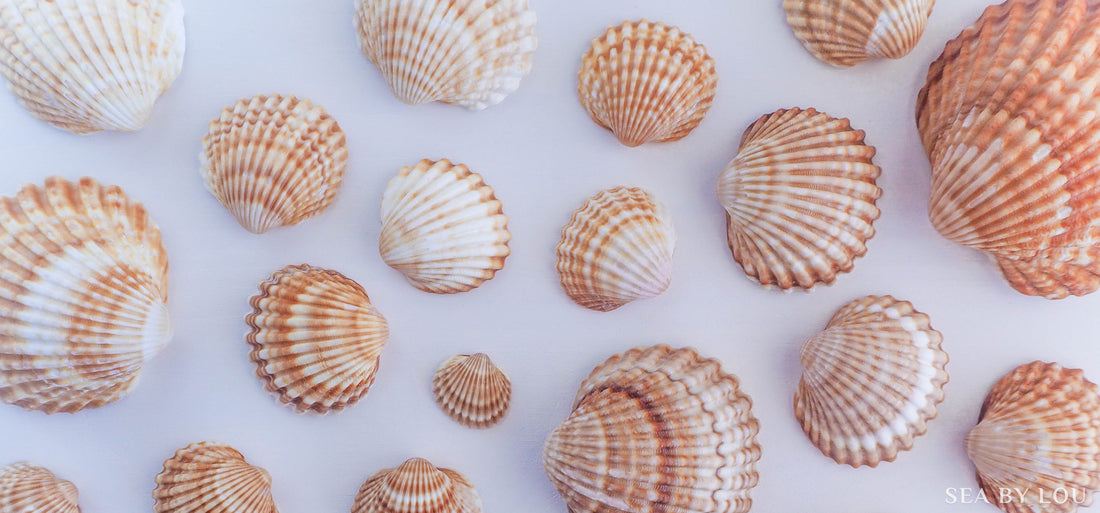- Size: Can reach up to 7 centimeters
- Color: Yellow, white, brown, orange, reddish
- Family: Cardiidae
- Fun fact: Some shells have sharp spines along the edges
The Mediterranean Cockle (Acanthocardia tuberculata) is a species of bivalve mollusk that is commonly found in the Mediterranean Sea and the eastern Atlantic Ocean, including Portugal, Spain, France, Italy and Greece.
In Portugal these shells are mostly found along the coast in the southern region and are often washed up on beaches of the Algarve. The Mediterranean Cockle is a shell that is used in many of my pieces because of their bright color that gives that sunny feeling.

Aesthetics
The shells of the Mediterranean Cockle are generally heart-shape, thick and sturdy. They have a radial ribbing pattern and some shells have sharp spines along the edges.
The spines along the edges of the Mediterranean Cockle shell are not only decorative, but these sharp spines also serve as a defense mechanism against predators trying to open the shell. The radial ribbing on the shell provides strength and support, they also help the Mediterranean Cockle to anchor itself in sandy or muddy bottoms.

The color of the Mediterranean Cockle shell can vary depending on the location where it is found. The shell is usually pale beige or light brown in color, with radial ribs that may be darker in color. The interior of the shell is typically white in color. The spines along the edges of the shell are often a darker color than the rest of the shell, and may be black, brown or purple.
Most of the Mediterranean Cockle shells that I find along the coast of Portugal have a rich brownish-yellow-orange color and vary from the tiniest 0.5 cm till around 7 cm.

Ecosystem
The Mediterranean Cockle is an important species ecologically, as it helps to improve water quality by removing small particles and plankton from the water through its filter-feeding behavior. The shells of the Mediterranean Cockle also provide habitat for other marine organisms, such as algae, worms and small crabs. The Mediterranean Cockle is also considered a delicacy in some countries.

The Portuguese name for the Mediterranean Cockle is "berbigão”.
Berbigão is a popular seafood item in the Portuguese cuisine typically in dishes such as "Arroz de Berbigão" (rice with cockles) and "Açorda de Marisco" (a traditional seafood soup).
Ancient times
The Mediterranean Cockle shells have played an important role in the culture and traditions of the Mediterranean region for centuries. The Mediterranean Cockle shells are still highly valued for their aesthetic qualities, and are often used in crafts and jewelry-making.
The Mediterranean Cockle shell is a fascinating colorful shell that has both practical and decorative uses for shell lovers, while they also playing an important role in the marine ecosystem.
Interested in a beautiful piece with Mediterranean Cockle shells? Visit my shop here.


